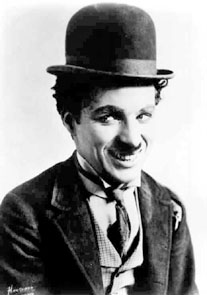
Site Map * What's New * Search
Visual Culture
Movement of the 19-20th centuries
Postmodern (POMO) as a summary and result of the previous periods -- and negation? PopArt. Civilization v. culture.
New Individual? Dividuals (Deleuze). Marxist model of SELF. Type of conflicts
Script Analysis: periods
Review:
FILM CHRONOLOGY
1. To 1895: Pre-history (Photography)2. 1896 - 1915: The Birth of Film
3. 1916 - 1930: The Silent Film, Radio and Sound Film
4. 1931 - 1945: The Hollywood Era
5. 1946 - 1960: The Age of Television
6. 1961 - 1980: The Media World
7. 1981 - present: The Digital World
(c)2004 *
Summary
more in THR344 Film & MoviesQuestions
Turning Points in Film History The History of Film (World of Art) The latest in Thames and Hudson's World of Art series, Parkinson's History of Film is impressively thorough despite its brevity. Beginning with cinema's inception in 19th-century inventions that exploited persistence of vision, Parkinson covers most of the major developments in film history. The rise of the Hollywood studio system, the evolution of national cinemas, and film movements of the modern era such as neorealism provide the framework for what perhaps too often reads like a laundry list of the most influential directors, titles and performers. Given the size of the volume, some subjects, such as animation, special effects, contemporary experimental cinema and the role of the home movie and video are given short shrift or neglected. An abrupt coda speculates on the future of film technology, an unfortunately dry conclusion to the book. Nevertheless, this scholarly overview is an excellent introduction to the key themes and pioneers of cinematic art. Parkinson adeptly articulates the contributions of particular directors and movements and provides succinct social and historical context for the subject. Generously illustrated throughout with black-and-white stills, History of Film features a central section of color illustrations that traces the development of color film processes.Notes
Film History: An Introduction Written by two leading film scholars, Film History: An Introduction is a comprehensive survey of film-from the backlots of Hollywood, across the United States, and around the world. As in the authors' bestselling Film Art, concepts and events are illustrated with actual frame enlargements, giving students more realistic points of reference than competing books that use publicity stills. The Oxford History of World Cinema Most histories of the international cinema focus on the careers of prominent directors. But the authors of The Oxford History of World Cinema set cinematic genres, trends, and national themes at the fore, composing a history of the cinema that is equally a history of our multifarious world culture. Still, in deference to the older historical style, the text of this hefty book is dotted with hundreds of minibiographies on individual filmmakers. The result of this hybrid approach is one of the most comprehensive film histories ever, allowing insight into its complex subject from a number of different perspectives.


